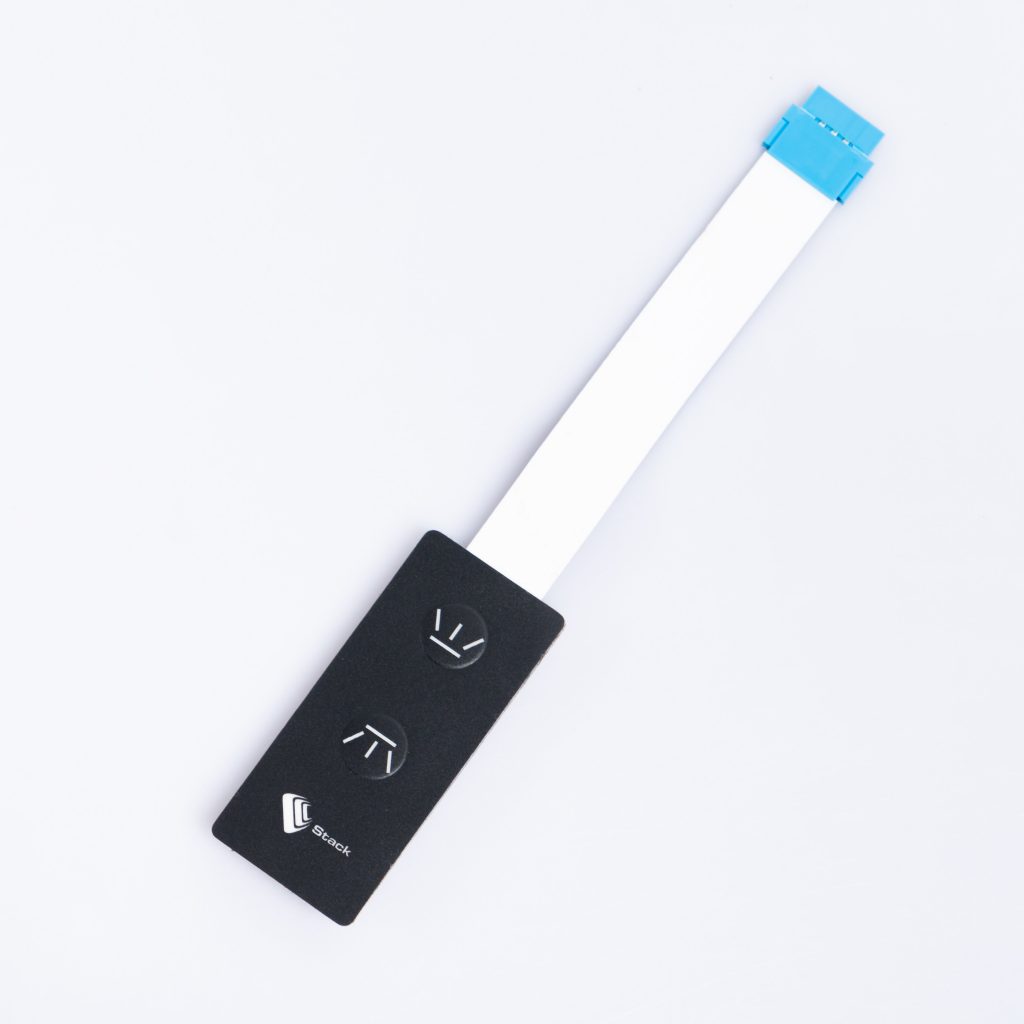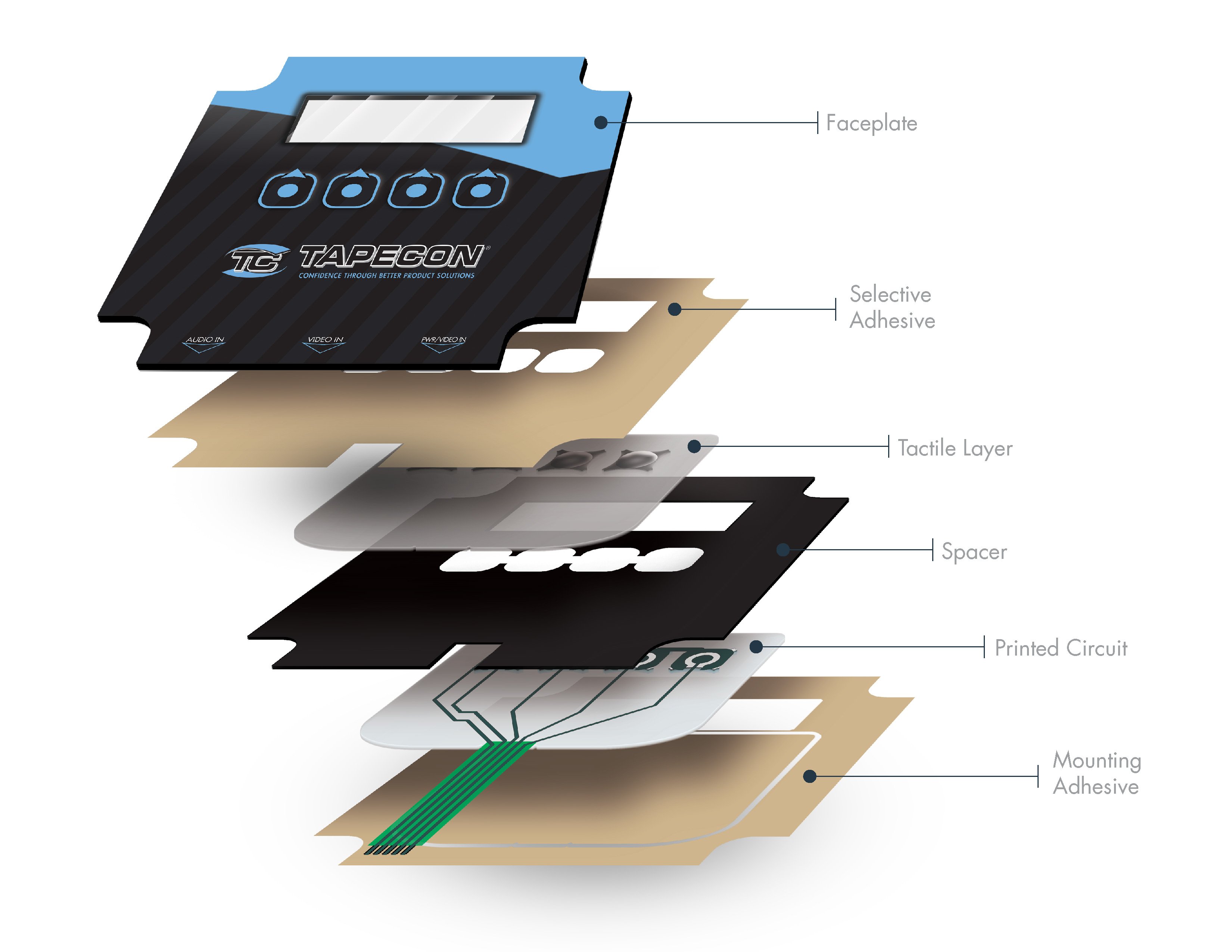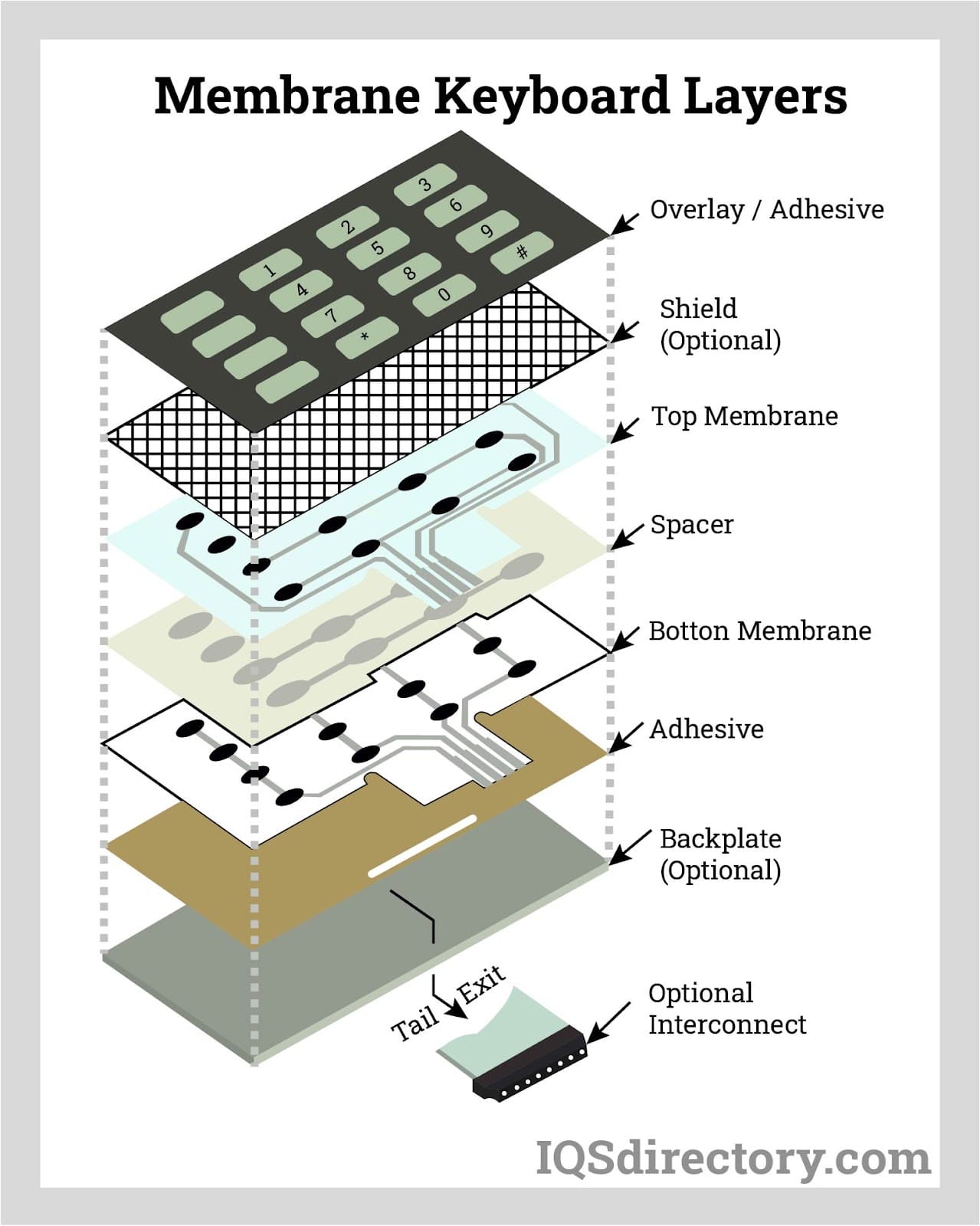The Manufacturing Refine Behind Membrane Change: What You Need to Know
The production process behind membrane layer switches combines cautious design, product selection, and quality assurance. It begins with comprehending the intricacies of membrane layer switch style and progresses with numerous stages, consisting of material options and printing techniques. Each stage plays an important function in ensuring performance and durability. Nevertheless, the intricacies of layer construction and the extensive screening requirements may reveal insights that are not immediately obvious. What exists past these fundamental elements?
Comprehending Membrane Layer Switch Over Layout
Although membrane switches may show up straightforward at first glance, their style includes detailed factors to consider that guarantee functionality and toughness. The design process begins with an extensive understanding of customer needs, consisting of the interface's designated application and environmental elements. Functional designs is a crucial aspect, as the design should help with simplicity of use while ensuring that tactile responses fulfills customer expectations.Moreover, the layering of elements, such as graphic overlays, adhesive layers, and conductive traces, must be precisely crafted. membrane switch. This split setup not only affects the button's responsiveness however also impacts its long life. Focus is offered to the sealing techniques used to secure against moisture and dirt, which might compromise efficiency. In addition, style considerations include appearances, where color design and aesthetic clearness enhance customer experience. Eventually, the design of membrane layer changes balances capability, user experience, and durability, making certain that they satisfy the needs of different applications efficiently
Products Used in Membrane Layer Change Production
When choosing products for membrane button manufacturing, it is crucial to consider both efficiency and sturdiness. The primary materials consist of polyester and polycarbonate films, which give versatility and toughness. These films are usually coated with sticky to assure correct bonding to substrates. Conductive inks, usually composed of silver or carbon, are crucial for developing electric links within the switch, permitting reputable operation.Additionally, a safety layer, such as a hard coat, is regularly applied to improve scrape resistance and long life. The choice of backing material, such as acrylic or foam, can substantially impact the switch's responsive feeling and overall individual experience. Numerous ecological factors, including temperature and moisture, must lead product selection to guarantee peak performance in particular applications. Eventually, the ideal combination of products adds to the membrane layer button's capability and life-span, making educated selections essential for producers.
The Printing Process: Creating Graphics and Text
The printing process in membrane switch production plays a significant role in producing high-quality graphics and text. Various graphic design techniques are employed to guarantee visual allure and capability, while mindful ink option techniques are necessary for longevity and efficiency. Comprehending these aspects is fundamental for achieving ideal lead to membrane layer switch design.
Graphic Layout Techniques
Graphic style techniques play an essential duty in the printing process of membrane buttons, as they define just how graphics and text will inevitably appear on the final item. Effective visuals style entails the calculated use of colors, formats, and font styles to boost readability and visual charm. Designers commonly utilize vector graphics for scalability, making certain that images continue to be sharp at different dimensions. Additionally, attention to comparison and positioning is essential, as it influences customer interaction and visual quality. The unification of branding aspects, such as logo designs, should be taken care of with care to preserve brand stability. On the whole, thoughtful graphic style techniques contribute substantially to the functionality and appearance of membrane layer switches, affecting individual experience and item efficiency.
Ink Selection Techniques
Choosing the ideal ink is important for accomplishing the wanted aesthetic quality and sturdiness in membrane layer button manufacturing. Various ink types are utilized, including solvent-based, water-based, and UV-curable inks. Each type uses distinctive features, such as adhesion, resistance, and flexibility to ecological aspects. Solvent-based inks are commonly preferred for their longevity and vivid shades, while water-based inks are extra eco-friendly yet might have restrictions in bond. UV-curable inks supply fast curing and robust efficiency. In addition, shade matching methods ensure that the selected inks align with layout requirements. Inevitably, the option of ink should consider factors such as application approach, substratum compatibility, and end-use demands to accomplish superior cause membrane layer switch graphics and message.
Layer Building And Construction and Setting Up

Product Option Refine
A mindful selection of materials is important in the manufacturing process of membrane switches, as it directly influences performance and toughness. The key products utilized consist of polyester, polycarbonate, and different conductive inks. Polyester is commonly preferred for its superb resistance to chemicals and abrasion, making it ideal for rough settings. Polycarbonate, on the various other hand, supplies remarkable clearness and effect resistance, which is helpful for applications needing exposure and toughness. Conductive inks, usually composed of silver or carbon, are important for creating reliable electric paths. Furthermore, the option of adhesive products influences the general stability of the switch - membrane switch. Evaluating variables such as ecological exposure, responsive responses, and aesthetic requirements overviews makers in choosing the most effective products for their certain applications
Layer Bond Techniques
Sticking layers in membrane button building and construction is a crucial process that assures performance and longevity. Numerous bond techniques are used to secure ideal bonding in between layers, which generally consist of using adhesives, heat, and stress. Pressure-sensitive adhesives (PSAs) are typically made use of for their simplicity of application and immediate bonding abilities. Furthermore, thermal bonding techniques can be used, where heat is utilized to activate sticky buildings, protecting a solid bond. The choice of bond method mainly relies on the materials included and the specific application demands of the membrane layer switch. Appropriate placement and uniform application of adhesives are important to avoid flaws, securing the switch runs properly throughout go to my site its intended life expectancy.
Quality Assurance Steps
Ensuring quality assurance during the layer check here building and setting up of membrane layer buttons is important for preserving efficiency and integrity. This process usually entails several crucial procedures, consisting of thorough evaluations at each stage of manufacturing. Suppliers make use of advanced testing methods, such as peel tests and bond evaluations, to confirm the stability of layer bonds. In addition, aesthetic examinations are conducted to identify any defects in printing or material disparities. Environmental conditions, such as temperature and humidity, are meticulously checked to ensure perfect healing and attachment. In addition, normal calibration of tools aids preserve accurate manufacturing standards. By implementing these quality control actions, suppliers can substantially minimize the danger of product failing, assuring that the final membrane switches over satisfy the needed specifications and consumer assumptions.
Evaluating and Quality Assurance Actions

Advancements in Membrane Switch Over Innovation
As advancements in modern technology remain to evolve, membrane layer switches are gaining from ingenious developments that improve their functionality and customer experience. One noteworthy innovation is the combination of capacitive touch technology, which enables more instinctive and responsive customer interfaces. this link This shift not just improves appearances however additionally decreases mechanical damage, extending the life-span of the switches.Additionally, advancements in visuals overlay products have caused improved toughness and resistance to environmental elements such as dampness and UV light. These materials now supply enhanced clearness and illumination, further raising the aesthetic appeal.Furthermore, the incorporation of smart innovation is changing membrane switches right into interactive control board, enabling connectivity with IoT gadgets. This connection cultivates a seamless user experience, leading the way for applications in numerous industries, from healthcare to customer electronics. Jointly, these technologies position membrane changes as important parts in modern-day device design.
Frequently Asked Questions
Exactly how Long Does the Membrane Layer Change Production Refine Take?
The period of the membrane layer button production procedure can differ significantly. Variables such as intricacy, products made use of, and manufacturing quantity impact timelines, with normal manufacturing varying from a few days to a number of weeks for completion.
What Are the Typical Applications for Membrane Switches?
Membrane buttons are generally made use of in numerous sectors, consisting of vehicle controls, family home appliances, medical devices, and consumer electronic devices (membrane switch). Their convenience and longevity make them excellent for applications calling for easy to use interfaces and dependable performance in varied settings
Can Membrane Switches Be Customized for Details Requirements?

What Is the Lifespan of a Common Membrane Change?
The life expectancy of a regular membrane layer button differs, yet generally, it ranges from 1 to 5 million cycles. Factors such as usage, environment, and material quality significantly influence sturdiness and general performance gradually.

Are Membrane Layer Changes Eco-friendly?
The environmental kindness of membrane layer changes varies. Some products made use of might not be recyclable, while others can be environment-friendly. The general impact depends on making products and methods, demanding cautious consideration throughout choice and disposal. The manufacturing procedure behind membrane switches combines mindful style, material option, and high quality control. It begins with recognizing the ins and outs of membrane button design and proceeds with various phases, including product options and printing techniques. When choosing materials for membrane layer switch production, it is vital to contemplate both efficiency and resilience. A mindful selection of products is important in the production procedure of membrane switches, as it straight influences capability and sturdiness. The selection of bond approach mostly depends on the products involved and the certain application requirements of the membrane button.